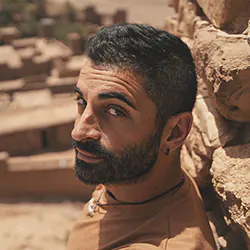The journey to Croatia was born, for Loretta and me, to be that short trip, not too far away, not too expensive, not too long, just to keep the travel habit alive. Obviously, there is curiosity about a country never visited before, but whether it's the proximity or the rather mild, if not nonexistent, cultural shock, it's clear that our mindset and enthusiasm are not particularly shaken, as they were in past experiences involving more remote destinations, geographically and/or culturally, like India, Jordan, Japan, or Morocco.
This preamble has created the perfect soil for the growth of surprise, amazement in front of a wonderful country, incredibly rich in greenery, history, and with a very interesting, varied cuisine that is quite similar to Italian!
As is now customary, we arm ourselves with a rental car, maps (downloaded on Google Maps and also available offline because you never know), and start our itinerary, a loop that starts and ends in Zagreb but, precisely because of its "circular" nature, can be started from any of the stops that make it up.
If you are only interested in the stops, feel free to skip the next two paragraphs, even if they contain very useful logistical information!
Documents, Car Rental, Connectivity
If you are a European citizen, you can travel comfortably with your national identity card and rent a vehicle by showing your national driving license. As for connectivity, roaming should not entail additional costs to the monthly rate you already pay. However, usually, the rates include traffic limitations abroad. For example, for me, who has Vodafone as a provider and unlimited gigs in Italy, abroad (even though we were always in Europe), I had a quantity of gigs (about 12, in this case) that was sufficient for the week of the tour, but not infinite. Therefore, it is right to be careful and avoid excessive navigation to avoid finding yourself with the car breaking down in the middle of nowhere and unable to contact assistance. It is always better to take advantage of the Wi-Fi connections in the accommodations where you decide to stay and save, at least in those cases, traffic that can be vital when you are outside. As already mentioned, a little extra caution doesn't hurt, and even before leaving Italy, I download the maps of Croatia on Google Maps on my smartphone and save all the stops that Loretta and I consider interesting and worth visiting.
Season, Accommodations, and Prices
It's October 2023, and Croatia, at this time, while still very popular, is far from the high season, the crowds, and its prices. With this in mind and blessed with a climate that still gives us summer days, we decide to book only the first night in Zagreb, knowing that, precisely because it's not the high season, we wouldn't have had any difficulty booking accommodations for the subsequent stops, one by one. Whenever possible, we prefer this apparently "less organized" approach to give more flexibility to our itinerary. In the past, on other trips, by locking ourselves into overly defined schedules and with plenty of reservations, we ended up experiencing the regret of not being able to stay one more day in a place that we felt we should experience more or, on the contrary, experiencing the impossibility of leaving a place earlier than planned (and booked). However, be aware of the prices! As for the accommodations, we managed to stay within a budget of a maximum of around sixty euros for a double room (the peak was reached on the last night in Zagreb, at the end of the loop, in a facility near the airport!). Restaurants, on the other hand, except for Zagreb, the most economical city on the itinerary, were rather expensive in the other locations. We will delve into this topic in specific sections dedicated to the specific stops!
1 - Zagreb

The capital of the country is undoubtedly the least visited city among those on our itinerary. However, because it's likely that the plane will take you there, it definitely deserves a whole day with an overnight stay (it would even deserve two on longer itineraries of a week or more!). A stroll in the center of Zagreb is a good start to begin to breathe in the Croatian air, its culture, and, most importantly, its cuisine at prices you may not find as convenient elsewhere! Personally, I wanted to start my tasting (I even had a culinary itinerary) with štrukli, which are cheese-filled pasta rolls (similar to cannelloni), that I ate at the La Štruk restaurant in the heart of Zagreb (8 euros and 50 cents). Surrounded by historic buildings damaged by the earthquake in 2020, we take a tour of the colorful city market (Dolac), admire the colors of St. Mark's Church (see photo), the grandeur of the Cathedral (unfortunately covered with scaffolding), the depth of the Gric tunnel, and the style of the Mirogoj Cemetery (the latter being the only stop that, in hindsight, I would have easily skipped). Zagreb is also rich in museums, often quite unique (like the one about broken relationships) that could entertain interested visitors for days on end. To cap off the day, I had dinner with another typical Croatian dish: Pašticada, a dish made of gnocchi and meat.
2 - Plitvice
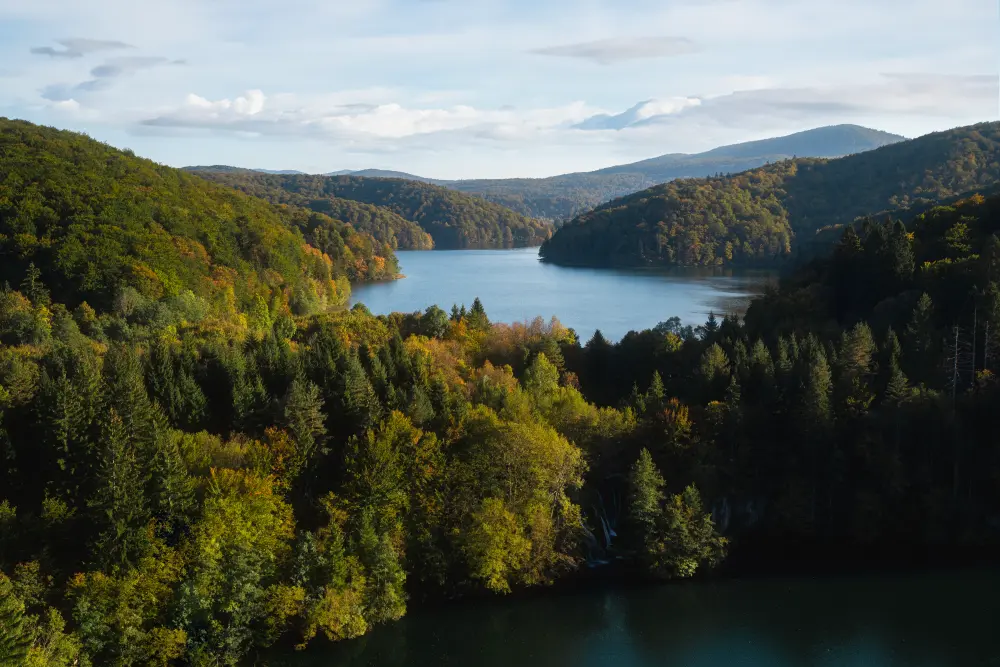
As mentioned, Croatia is covered in an incredible amount of greenery, which, in our opinion, reaches its peak of splendor in the Plitvice National Park. The park entrance fee can reach up to 40 euros per person in the high season, but in October, it drops to 10 euros. Luck is on our side, and despite the greatly reduced price, we enjoy the reserve in the midst of a summer day. Another plus of the mid-low season is the lower number of visitors (although there were still many at the main attractions!). Loretta and I love to explore less-traveled paths, savor the sounds of nature, and views that, at least for a moment, feel like ours alone. For this reason, confident that we can experience these emotions, we choose to follow route K, the longest and most challenging one (30km with a significant elevation gain towards the end), which not only takes us to the most visited spots but also quite far (VERY far) away from them and high up, where we can almost always enjoy nature in solitude! The park has two entrances, and the route you decide to take may not touch both of them. Before going, visit the official website for more information. But what's in Plitvice? The reserve is "nothing more than" a series of terraced lakes, arranged at different altitudes, exchanging water with waterfalls that reach extreme levels of suggestiveness. The turquoise of the water is enchanting, and you never cease to be amazed by the fact that going down further (or up higher, depending on the direction), there's always another lake.
In the evening, still within the boundaries of the natural area, I was able to enjoy another of the typical dishes that I had planned to taste: ?evap?i?i (a dish of spiced small sausages).
The only "negative" aspect of Plitvice is that, at least from a naturalistic perspective, it sets an excessively high standard of quality at this point in the journey, which raises concerns that it may be difficult to appreciate the subsequent naturalistic stops, which could appear disadvantaged in comparison.
3A - Paklenica (Optional)
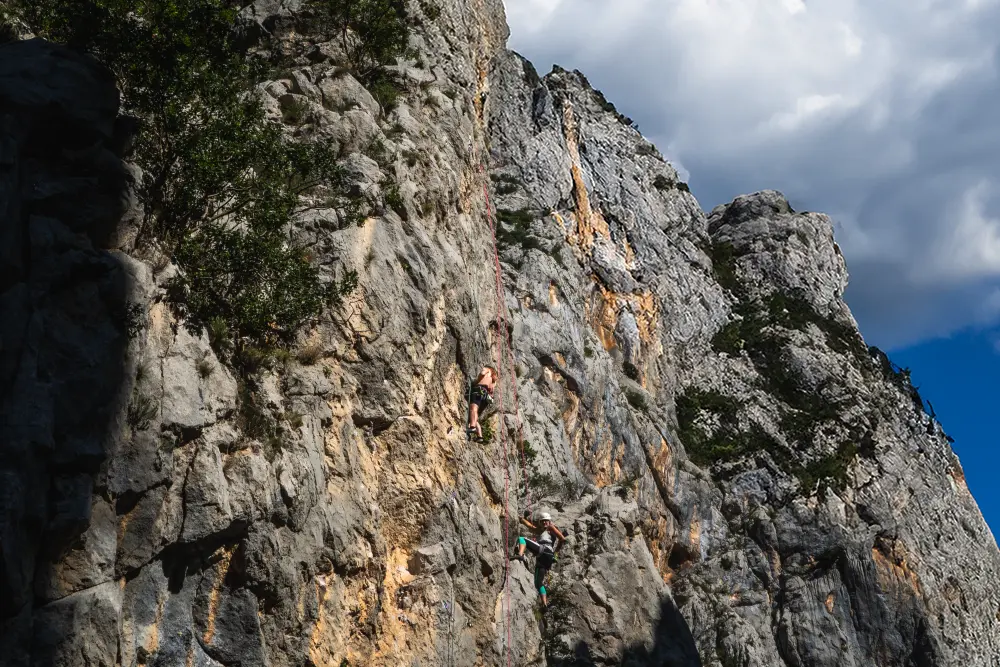
During the morning of the third day, we visit the Paklenica National Park, hoping that its different nature, compared to the one from the previous day, wouldn't suffer from the comparison with Plitvice. Paklenica is a mountainous environment, quite different from the lakes and waterfalls of the previous day. However, apart from a couple of particularly charming views and the timeless pleasure of a hike (with a good elevation gain) in nature, Paklenica doesn't particularly amaze. If you're a climber or someone looking to try climbing, though, stop here. The high and vertical rock walls of the park offer countless routes for climbers and an incredible number of learning stations (you'll need to pay for an instructor, of course). If you fall into this latter category, Paklenica might have much more value for you than it has for us (although we have a bit of a climbing bug). If you're an ordinary biped, on the other hand, you might skip this stop (also because you're naturally satisfied with the previous day) and enjoy a whole day in the lovely city of Zadar.
3B - Zadar
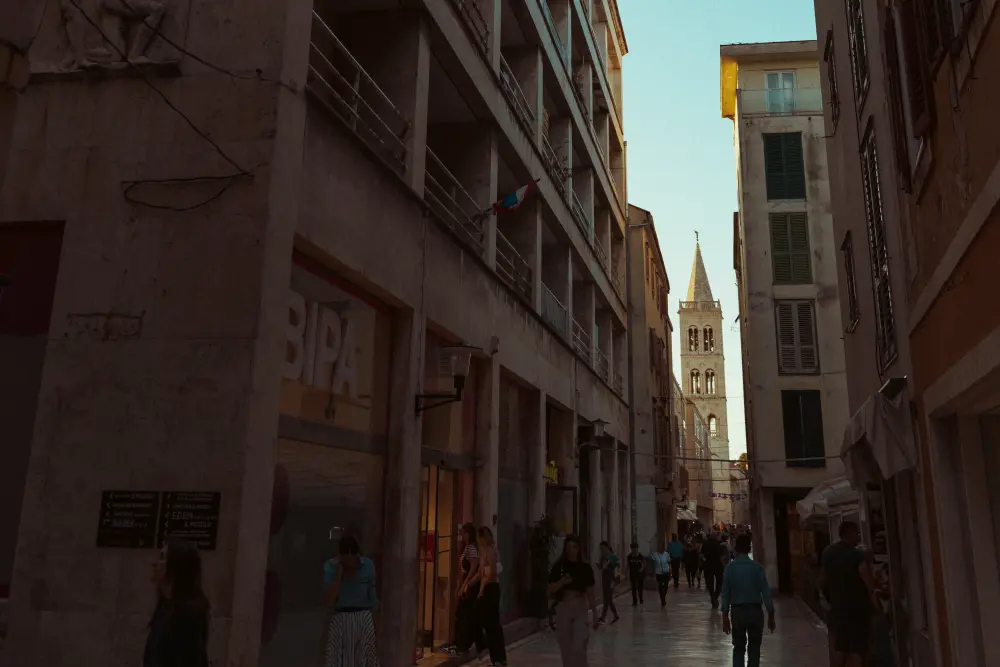
We're still on the third day, and after the morning hike, we decide to move to the nearby city of Zadar for the afternoon and evening. The historically interesting part of the city is not very extensive and can be easily visited in a few hours. Remnants of the Roman Empire begin to show themselves with columns and capitals scattered around the center. Around the area, which is a peninsula, there's the sea, and watching the sun set behind the mountains on the horizon is a fantastic experience. The most popular spot to enjoy the sunset is Pozdrav Suncu, where children can be amazed by the intermittent lighting platform that turns on to greet the sun. Finally, be aware! We're finally by the sea, and this can only mean one thing. It's time to try the traditional brudet, a special fish-based soup. The one I taste at the Pet Bunara restaurant (where I see a lot of other very inviting dishes as well) is made with cuttlefish, with fava beans, peas, and a piece of cheese polenta in the center. A spectacle!
4A - Krka
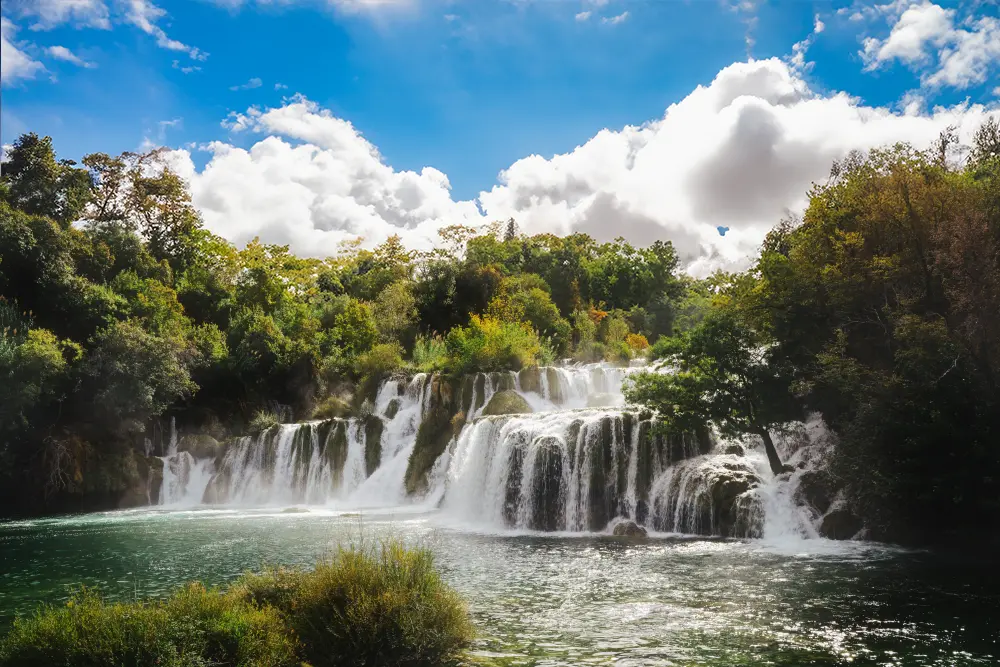
"Krka is the most beautiful natural place you can ever see in Croatia" is what I would tell you if Plitvice didn't exist. As we feared, the high standards set on our second day have "spoiled" (not always! Watch out for the last day!) the other natural stops. Krka is truly a marvelous natural reserve. Here, too, there are many waterfalls, many lakes, and lots of greenery. While visiting these places, we think about how nice it would have been to tour them the other way around and be amazed by these places before enjoying the "Plitvice" dessert. In October, the park's entrance costs 20 euros per person, but it includes boat routes that we chose not to take advantage of. The park has a total of 5 different entrances, and the distance between them can be up to 40 minutes by car. Unlike Plitvice, you don't choose an entrance and then carry out your visit only from there. The Krka reserve is visited in stages because not all of its attractions are accessible from all entrances. In fact, it could be said that each entrance provides exclusive access to some attractions that cannot be reached from any other entrance. Therefore, you won't be able to enjoy a day of total immersion in the green because there will be inevitable car travel and asphalt between one entrance and another. Also, and especially in this case, it will be important to look at specific articles for more information.
4B - Split
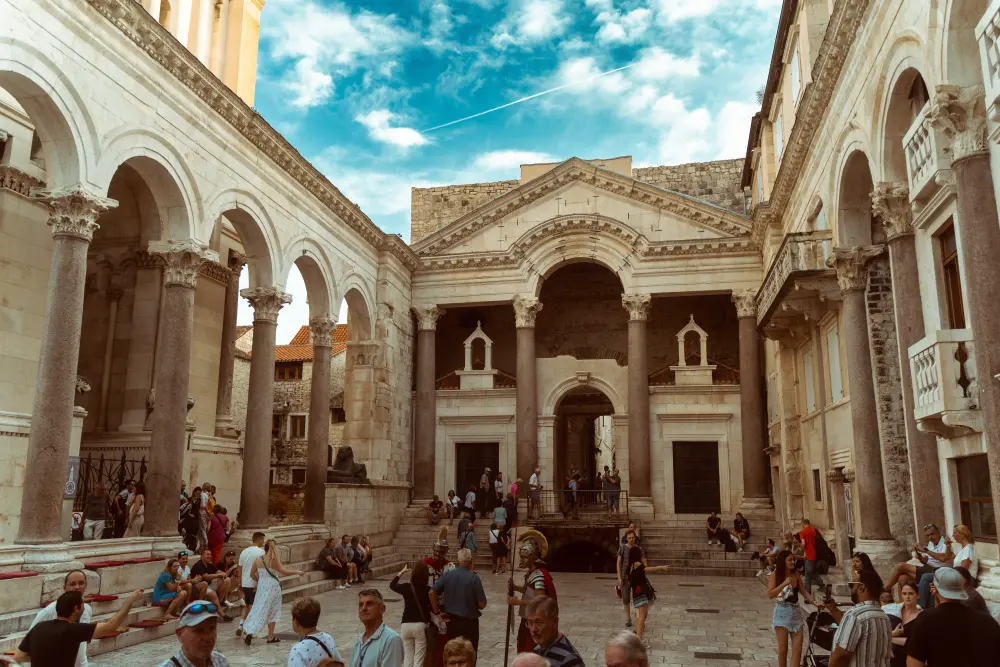
Like day 3, day 4 is also split between nature and city. This time, the choice fell on Split (no pun intended). Considerably larger than Zadar, it "hides" in its historic center a real and unexpected gem. I don't know if it's my ignorance, but the city of Split is not a place I had ever heard anyone speak of with enthusiasm, nor is it one of those places you come across while scrolling through Instagram reels. Yet, whether it was low expectations that amplified the surprise, it can be safely said that Split is a gorgeous city! The signs of ancient Roman presence become even more satisfying to the eyes, compared to the small Zadar, and reach their peak in the Diocletian's Mausoleum, with an adjoining square and the entire historic center and streets that branch out from there. For fans of the series Game of Thrones, the streets of Split may not seem entirely new. Some scenes of Daenerys Targaryen's journey were actually filmed in Split! A piece of advice: in bars and restaurants, check the menus and prices before placing an order!
5 – Dubrovnik
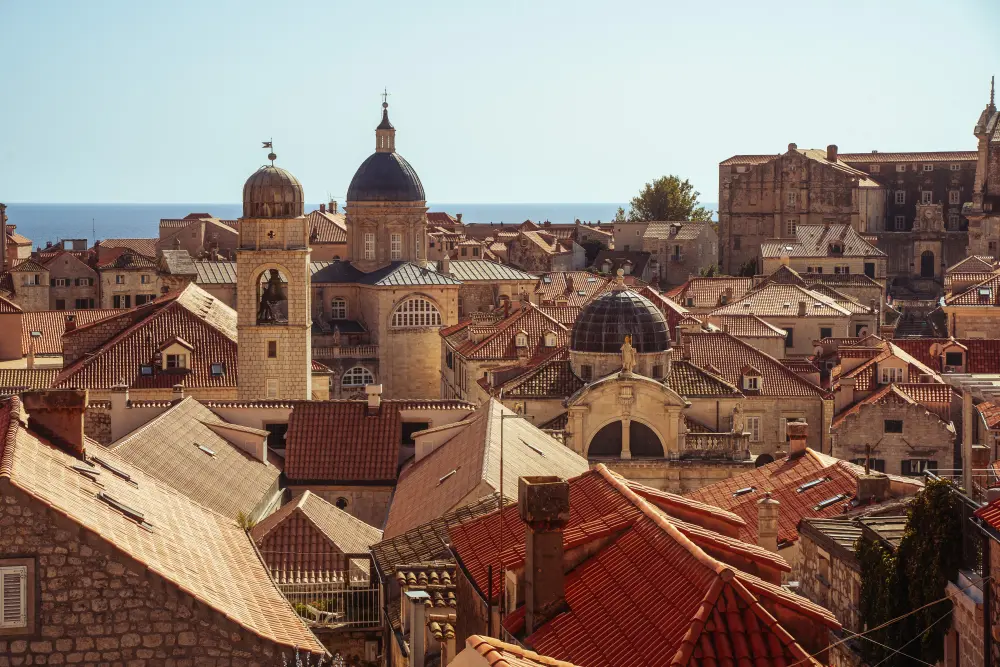
In this city, Game of Thrones not only passed through but practically stopped from the first season to the last. Dubrovnik, in fact, is nothing other than "King's Landing," the capital of the Lannister Empire! To access the city's attractions, apart from the streets of the center (where you can recognize glimpses of the "walk of shame" that Cersei Lannister was forced to walk, naked), it's advisable to buy a single ticket for 35 euros, which includes entry to a total of 10 museums, to the fortress just outside the city walls, and to the walk (about 2 km) on the city walls, offering the best views from above of the characteristic orange rooftops of the historic center and the sea! Dubrovnik forces those visiting Croatia to reach the country's southernmost point, but going there is a must. Here, as in the other coastal locations mentioned earlier, you can taste, among other things, the famous cuttlefish ink risotto! Just one piece of advice, though: be prepared to sell a kidney to pay the bill!
6 – Mount Dinara
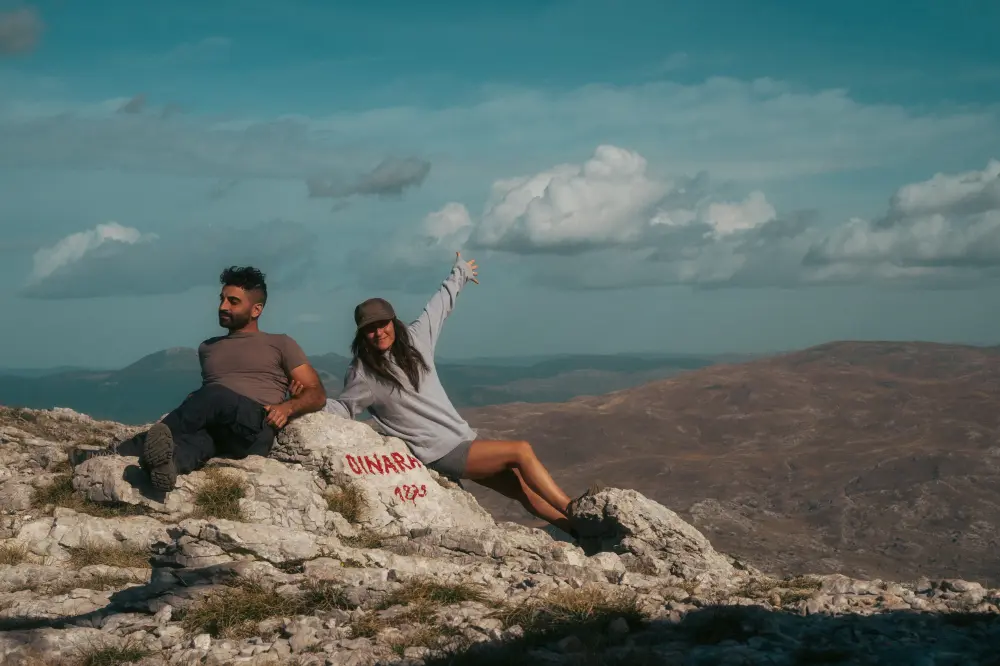
Our journey will end where it began: in Zagreb. Upon reaching the southernmost tip, however, it's important to find a place to spend the last day on the way back. The reason that led us to choose Mount Dinara is not only the logistical aspect just mentioned. Those who follow this blog, those who have had the opportunity to read the stories of other trips, will know well that Loretta and I have a particular fondness for hiking and reaching the highest peaks. Especially after setting foot on the summit of Mount Toubkal in Morocco (you can read the story in this article), the "mountain climb" has become a must in any of our trips. The Dinaric Alps (named after this mountain) are a range that extends from Croatia to Bosnia and Herzegovina, and the highest point in Croatian territory is 1,839 meters above sea level, and it is Mount Dinara itself. Finally, after the "trauma" of Plitvice, this mountain managed to greatly excite us again, with views of nothing but pure, unspoiled nature. The journey to the summit is quite long and tiring (about 4 and a half hours if you maintain a good pace), but it offers views that mountain lovers will greatly appreciate. Keep in mind, we are not talking about a tourist destination. In fact, apart from the two of us, during the approximately 10 hours of walking, including the round trip, we only encountered four other people. The heat, even though it was mid-October, was rather tough to bear and amplified by fatigue and the almost complete lack of shade and trees (the vegetation is almost entirely low). So, think it over if you are planning to take on this trek in the hotter months! If you decide to do it, you need to be well-prepared. The hiking experience was, as always, an opportunity to reflect deeply on anything, ranging from the deepest existential thoughts to curiosity about an insect fluttering about. I repeat, it's not a tourist destination, but an experience I would recommend to anyone looking to challenge themselves a bit and enjoy the satisfaction of reaching a goal, surrounded by the beauty of this magnificent mountain.
After a fantastic (and very economical and abundant) dinner of meat at "IVAN obrt za ugostiteljstvo," just 10 minutes from the parking lot at Glavas, where the Dinara trek begins, we let sleep overcome us.
Our itinerary ends here. To complete it within a week, having the independence of a rental vehicle is certainly very important. It covers many tourist points of interest, although, of course, despite covering a good part of the country, it does not include the eastern interior of Zagreb, Istria, and the numerous islands, visiting which would have disrupted our schedules, tying us to the schedules and travel times of the ferries. There is certainly much more to discover in this small but surprising country, but we do not regret any of this itinerary (or very little!). Have a great trip, then, and if the article was helpful, leave a like, a comment, or share it! If you want to be informed about the release of similar articles, subscribe to the NEWSLETTER. If you want to experience my travel experiences in real time, follow me on Instagram and/or on Facebook.


